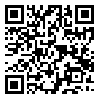BibTeX | RIS | EndNote | Medlars | ProCite | Reference Manager | RefWorks
Send citation to:
URL: http://mjiri.iums.ac.ir/article-1-216-en.html
Abstract
Background: To produce a reliable probe suitable for aneuploidy detection of chromosome
13 on uncultured lymphocytes and amniocytes by fluorescence in situ hybridization
(FISH), we used a contig of three overlapping cosmids mapped to 13q12.3.
Methods: The cosmid DNA carrying the expected sequences of human chromosome 13
was isolated from host cells and labelled with biotin-11-dUTP. The hybridization and detection
conditions with FITC-Avidin were optimised using a series of cultured and uncultured
lymphocytes and amniocytes.
Results: Intensive signals were detected when a combination of three overlapping cosmids
was used to enumerate the chromosome 13 on interphase nuclei. An average of 87
and 85.5 percent of interphase cells prepared from lymphocytes and amniocytes showed
accurate number of specific signals for chromosome 13.
Conclusion: The results obtained in present study indicate that the probe was capable of
detecting the copy number of chromosome 13 on interphase cells prepared from peripheral
blood or amniotic fluid cells providing that the uncultured amniotic fluid cells are free of
cytoplasmic residues, RNA and protein debris.
| Rights and permissions | |
 |
This work is licensed under a Creative Commons Attribution-NonCommercial 4.0 International License. |





